It’s late afternoon and your ten-month-old is rubbing their eyes and just will not stop crying.
The number of words in English or any other known language that this child can speak: ZERO.
But is this baby communicating with you?
Most parents would say “yes” - this baby is telling you “Please turn off The Wheels on the Bus, I do not need ‘enrichment’ right now. What I need is a nap, thank you very much.”
Simple, right?
Even though very young children do not yet have the verbal vocabulary they’ll eventually develop, they can still be very effective communicators. Just how effective they are, though, depends in large part on you… Are you looking for their communication? Are you noticing the patterns in their communication? Trying to understand your child’s cues, even in their first two years, can have a huge impact in promoting both their social and communication development.
In a child’s first year, crying is clearly (and sometimes painfully) their communication tool of choice. That said, if you pay close attention, you might notice that your child has slightly different cries for different situations - having a wet diaper, being hungry, needing a nap. But also think about all the other ways your baby communicates with you. A smile is an obvious (and delightful) one. But they likely also have other facial expressions that signal to you that they’re frustrated or curious or excited. And a baby’s gaze can tell you that they’re interested in exploring the person or thing that’s caught their gaze. Likewise, when a baby breaks its gaze with you and looks away, it may be an implicit criticism of your personal grooming… but it’s more likely to mean they’re either over-stimulated or tired. And babies communicate with us through their gestures - when they reach for people or objects or pick things up.
All of that and they never said a word!
In a child’s second year, their vocabulary really starts to grow, but crying still does a good amount of the heavy lifting, especially when the child wants to communicate strong emotions like anger and frustration. But the child usually understands many more words than they can speak - they may not be able to say “I take great pleasure in touching my nose,” but if you say, “Touch your nose,” they’ll probably giggle and delightedly do exactly what you asked. And they use their gaze in ever more complicated ways - they may look at your face to measure your response to a novel situation, like a new person entering the room. And of course, they use their little bodies to communicate - by walking, pointing, by taking your hand.
Your part of the job is to try and observe and interpret the ways your child is trying to communicate with you. You may not always score a bull’s eye - that gaze toward the door could mean “I want to go outside now” or it could mean “What is that pretty shadow over there?” Through trial and error, though, your child will teach you what they want to communicate. And there’s never any downside to your wrong guesses. Merely responding to what your child’s trying to communicate - even if you do get it wrong - sends them the message that their communication is important to you. And that motivates them to keep communicating… so that you can both eventually learn to understand each other even better.

